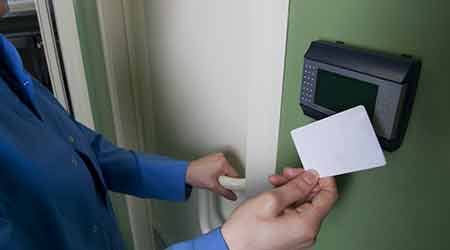Effective Key Management Policy Important First Step
Part 2 of 4-part article on door hardware
The first principle of key management is, the fewer keys, the better. A key management board is an effective tool that provides excellent location control for shared keys. In this system, only one key or key set exists for each lock and lock set for important facility components.
These components include fleet vehicles, HVAC mechanical rooms, fire-control systems, transformer vaults, confidential records storage areas, electrical distribution control centers, remote and unattended storage areas, storage areas for critical and high-cost tools and equipment, roof access doors, material stores, and data centers. Even though several users might need access to these areas at different times, only one key needs to be available on the key management board.
The key board consists of a key identification number, a retention peg and a release peg for each controlled key or set of keys. Each user receives a colored, numbered release peg. The release peg color designates department, such as operations, maintenance, research, or administration. The identification number on the release peg identifies a specific individual.
The user inserts their peg in the release slot, releasing the associated key or key set from the retention slot. This system provides a record and real-time display of all keys in the board, as well as all keys off the board, which has each key or key set and the lock with which it is associated. This system admirably meets the first principle of key management because it requires only one key to serve each lock. To release a key, an individual must insert and lock the release peg into the key board, so managers know which individual has each key that is removed from the board.
Related Topics:















